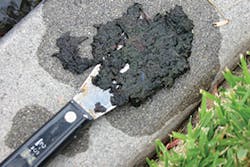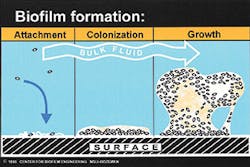Guest Editorial: Proposed Enterococci Standards and the Natural Exclusion Clause for Coastal Water Quality in the State of California
The California State Water Resources Control Board is expected to release new amendments to the statewide Water Quality Control Plans for Inland Surface Waters, Enclosed Bays and Estuaries, and the Ocean Waters of California (Ocean Plan) with more stringent water-quality regulations that will establish a level of concentration of enterococci bacteria at which warning signs must be posted on beaches. The state criteria for recreational water quality is likely to be consistent with the criteria issued by USEPA in 2012 (2012RWQC).*
At the same time, the State Water Board’s proposed regulations are expected to contain a natural exclusion clause that recognizes the fact that elevated bacteria levels due to natural sources of bacteria (generally enterococci bacteria growing in biofilm found in both street gutters and storm drains) are not a cause of swimmer-related gastrointestinal illnesses and do not pose a health risk. This natural exclusion clause should result in fewer beach postings in the state of California, a reduction in costs to the cities related to beach postings, and a greater ability for beach cities to focus on more important health issues in their communities.
Stormwater first published details of this natural growth of enterococci in biofilm found in street gutters in Newport Beach, CA, in the July/August 2010 issue. Studies determined that enterococci bacteria are growing in the street gutters of Newport Beach. Samples of gutter slime, or biofilm, were scraped from the gutters at seven widespread locations around Newport Beach that drain into Newport Bay, and it was determined by the Orange County Health Department, after sonication of the slime to release the bacteria for measurement, that the average enterococci concentration in 100 ml of these biofilm samples was seven million organisms.
Further studies completed by the city of Newport Beach focused on efforts to remove these biofilm from street gutters by street sweeping or treatment with chlorinated water sprayed on the street gutters. Although enterococci growing in street gutters were initially reduced 80 to 95% by these measures, the biofilm quickly reformed and gutter enterococci levels again rose to high levels only five days after chlorination or street sweeping.
Subsequently, Stormwater published a second article entitled “When Bacteria Call the Storm Drain Home” in May 2012. This study focused on 20 beaches in the San Diego region. The final conclusion of this study is summarized as follows: “These results imply that it may be virtually impossible to attain compliance with southern California TMDLs during periods of wet weather because of the potential discharge of biofilms from storm drains into receiving waters.”
A plethora of scientific studies have now documented that enterococci bacteria are prevalent throughout the environment. Their ability to form and multiply in biofilm has allowed these bacteria to survive on this planet far longer than man has been present on this Earth. The ability of enterococci to multiply in biofilms means that engineered approaches including disinfection, antibiotics, UV light, and other measures used in efforts to eliminate these bacteria are unlikely to be effective.
At the same time, we have concluded from studies in Newport Beach that enterococci and fecal coliform bacteria replicating in biofilm in street gutters and storm drains do not contain the presence of noroviruses. This is significant, as noroviruses are responsible for the gastrointestinal illnesses seen in swimmers recreating in marine waters contaminated by human sewage. These noroviruses can multiply only in the human intestine, not in environmental biofilms found in street gutters and storm drains.
Fortunately, the State Water Board has a plan to provide a natural exclusion clause that will address this issue, thereby allowing many of the beach cities in California to keep their popular beaches open if the high enterococci numbers in their coastal waters are caused as a result of runoff from street gutters and storm drains with water containing biofilm. By recognizing this phenomena and providing this natural exclusion clause, the result will be fewer beach postings, a reduction in costs to cities related to beach postings, and the ability of beach cities to focus on more important health problems in their communities.
* Specifically, EPA criteria for protecting human health in all coastal and non-coastal water designated for primary contact recreation use is an estimated illness (NGI) rate of 32 per 1,000 primary contact recreators with standard single mean of 110 enterococci bacteria per 100 ml water. Further, the criteria require a statistical threshold value level of 110 cfu/100 ml and a geometric mean of 32 cfu/100 ml for enterococci in marine water.



